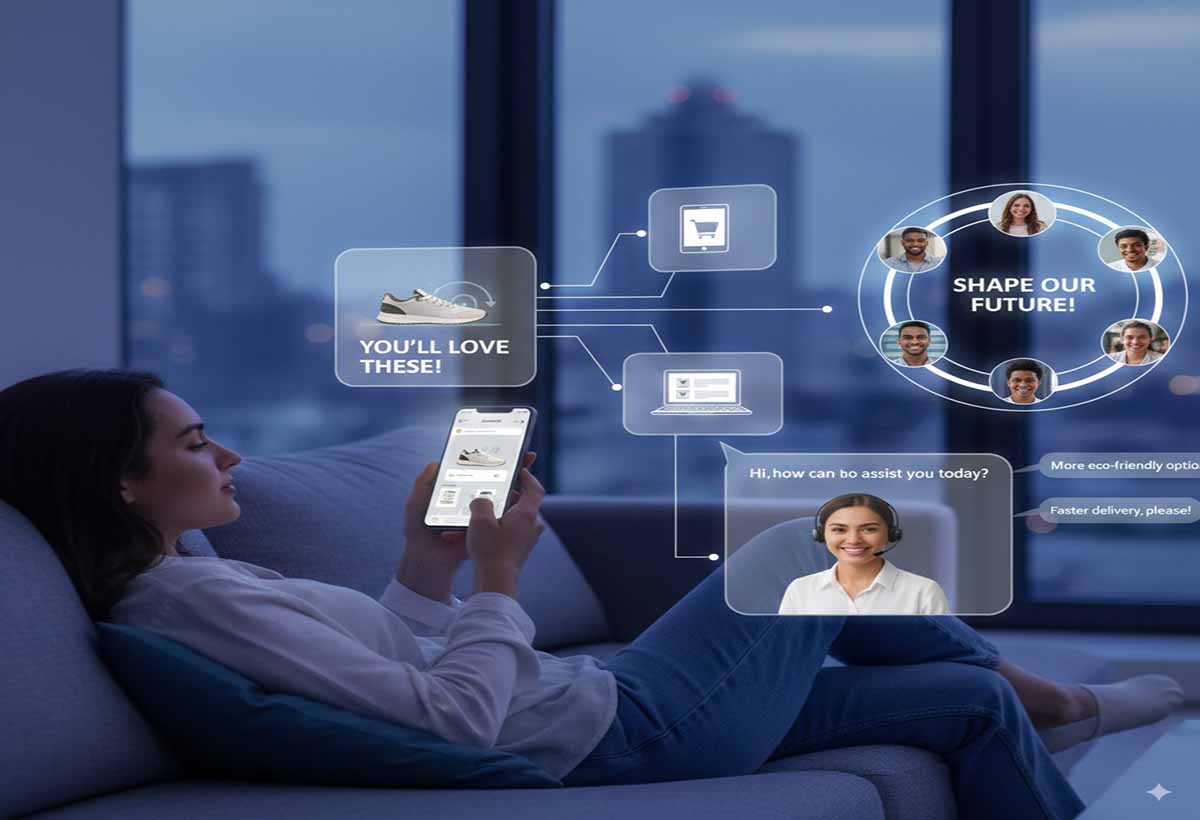
The New Face of Customer Expectations in the Digital Economy
In a time when a single tap on a phone can bring almost anything to your doorstep, it’s natural for people’s expectations to evolve. The way customers shop, interact, and connect with businesses has changed dramatically as digital technologies expand. From searching for information and planning vacations to purchasing daily essentials, transactions have become faster, more personal, and highly connected.
Every business, whether global or local, needs to understand these changes clearly. Those who fail to adapt risk falling behind in an increasingly intense marketplace.
The modern customer seeks more than just products or services. They want:
- Fast, reliable, and uninterrupted service.
- Personalized experiences tailored to their unique preferences.
- Consistent interaction across all platforms without disruptions.
- Trust, transparency, and responsible handling of data.
- Opportunities to share feedback and play a role in shaping brands.
Speed and Instant Service
Today, the word “fast” has taken on a whole new meaning. Customers are no longer willing to wait days for responses or services. For example, what used to be a normal shipping window of several days is now considered slow. Same-day or next-day delivery has become the standard in many regions.
Imagine a customer buying shoes online. If the shipping is delayed or their question to customer support goes unanswered for hours, there’s a strong chance they’ll move to another store that can respond quickly.
This expectation extends beyond delivery. Customers also expect rapid access to information, problem resolution, and transaction processing. If a question arises about a product, they look for instant answers through live chat or a fast email reply. When businesses fail to respond promptly, customers lose interest and look elsewhere.
Quick and attentive service communicates value and competence. In many industries, every second matters, and responsiveness directly influences customer loyalty and trust.
Personalized Treatment Beyond Just a Name
Speed alone isn’t enough. Modern customers value personalization and want interactions tailored to their unique needs. A simple use of their first name in an email no longer satisfies them.
True personalization involves understanding a customer’s shopping habits, interests, and previous interactions with the business. For instance, streaming platforms recommend movies and series based on past viewing behavior. Similarly, online retailers suggest products based on browsing history and previous purchases.
When customers feel understood, they’re more likely to continue engaging with the brand. Personalized offers and content strengthen emotional connections and make marketing efforts more effective.
A well-crafted, personalized experience signals that a company values its relationship with the customer. This level of care turns occasional buyers into loyal, repeat customers. In today’s competitive marketplace, personalization is no longer a luxury but a necessity.
Seamless Interaction Across Platforms
Modern customers use multiple devices and platforms to interact with businesses. They might start researching a product on a laptop, continue on a mobile app during their commute, and finish the purchase at a physical store.
They expect this process to be seamless. No one wants to re-enter details or repeat the same question every time they switch channels.
Consider a shopper browsing items on a desktop computer. Later, they open the mobile app, expecting their saved cart and wish list to still be there. If they have to start over, frustration sets in, and they may abandon the purchase entirely.
This smooth connection across all touchpoints is often called an omnichannel experience. Websites, apps, social media, email, and physical stores should all share consistent information and provide an integrated experience.
By delivering a unified system, businesses create a sense of organization and reliability. Customers feel in control, making the process easier and more enjoyable, which leads to greater satisfaction and loyalty.
The Growing Value of Trust and Responsibility
As businesses collect more data than ever, trust has become a critical factor in customer relationships. People are now highly aware of how their information is gathered, stored, and used. They expect companies to be transparent about data practices, explaining clearly how information is handled and who has access to it.
Any breach of this trust can have serious consequences for a company’s reputation.
Beyond privacy, customers also care deeply about a company’s values and ethics. Many prefer to support brands that demonstrate social and environmental responsibility. A brand using sustainable materials or ensuring fair labor practices will often gain stronger customer loyalty.
Trust and responsibility go hand in hand. It’s not just about following laws and regulations but about doing what’s right. When customers feel aligned with a brand’s values, their connection grows deeper, creating a lasting bond. This integrity plays a vital role in long-term business success on a global scale.
Active Customer Participation
In the digital era, customers no longer play a passive role. They want to contribute ideas, share feedback, and influence product development. Businesses that provide opportunities for this involvement tend to build stronger communities and deeper loyalty.
For instance, a software company might allow customers to vote on new features or suggest updates. Similarly, a fashion brand may ask its audience to choose designs or colors for upcoming releases.
When customers feel their voices matter, they become emotionally invested in the brand. This strengthens the relationship and improves the products or services being offered.
Social media and online communities are key spaces for this kind of interaction. Customers can ask questions, share experiences, and provide direct feedback. Brands that listen and engage openly in these spaces show they care, reinforcing trust and respect.
Why Overall Experience Matters More Than Products Alone
A high-quality product is no longer enough to guarantee repeat business. The entire journey—from initial contact to post-purchase support—shapes a customer’s decision to return.
For example, an online retailer with a user-friendly website, smooth checkout process, and simple return policy creates a far better experience than a store with a confusing layout and unresponsive support team. Even if both sell similar products, customers will choose the business that offers convenience and reliability.
Every touchpoint matters: website design, customer service tone, accessibility of information, and ease of navigation. Together, these factors form a complete experience.
By focusing on customer experience at every stage, businesses achieve higher satisfaction, stronger loyalty, and ultimately, increased revenue. Seeing each interaction through the customer’s perspective is essential for creating a positive overall impression.
Adapting to Constant Change
The digital economy never stands still. Emerging technologies such as artificial intelligence, machine learning, and augmented reality continually introduce new ways for businesses to engage with customers.
In the past, having a website and email support was enough. Now, customers expect brands to be present on social media, offer personalized notifications, and provide proactive assistance.
Younger generations, who have grown up surrounded by digital tools, have even higher expectations for connectivity and personalization. This makes it vital for businesses to continuously monitor trends and adjust accordingly.
The ability to adapt quickly is a defining trait of successful companies. Those who invest in research, experimentation, and attentive listening to customer needs are the ones who stay relevant and competitive.
These changes should be seen not as threats but as opportunities to improve services and deepen relationships. By embracing new technologies thoughtfully and staying aligned with customer needs, businesses can thrive even as the digital world continues to evolve.
Moving Forward with Customer-Centered Strategies
Understanding shifts in customer expectations is no longer optional. Global businesses must prioritize speed, personalization, seamless experiences, trust, and engagement.
Companies that listen closely and adapt to these changing needs will not only survive but also grow stronger. The key lies in continuous improvement and a genuine commitment to delivering value that resonates with people worldwide.
By viewing every interaction as an opportunity to build trust and connection, businesses can establish relationships that last well beyond a single transaction.


No Comments